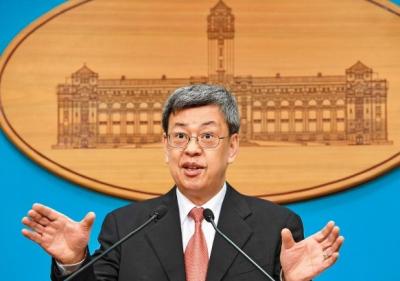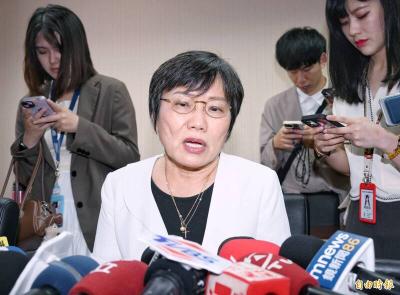Taiwan’s military and economic strategic significance should not be underestimated as cross-strait relations have a serious impact not only in Asia, but the rest of the world, former American Institute in Taiwan (AIT) director William Stanton said in Taipei yesterday.
China is interested in Taiwan because of its geographic location in the first island chain, a key region for Chinese military projection and a strategically important area close to the East China Sea and the South China Sea, Stanton said.
China is interested in taking Taiwan because of “where it is, not what it is,” Stanton said, adding that Taiwan’s east coast also provides access to the Pacific for China’s submarines.

Photo: Chien Jung-fong, Taipei Times
Stanton, who now lives in Taiwan as a permanent resident and serves as director of National Tsing Hua University’s Center for Asia Policy, delivered the speech at a forum organized by the Thinking Taiwan Foundation, which was founded by former Democratic Progressive Party chairperson Tsai Ing-wen (蔡英文).
The retired US diplomat encouraged Taiwan to integrate itself with its trading partners by joining regional economic agreements and to reach out to improve its relations with other countries so it would not be overdependent on China’s economy.
Stanton said it is “less likely” that Washington would assist Taiwan in the wake of a Chinese invasion, but as long as the consensus is maintaining the “status quo,” the cross-strait situation would not change.
The former director said the US has not been using Taiwan as a bargaining chip in its engagements with China and that Washington would not “just walk away,” but it is imperative for Taiwan to continue to have maximum contacts with officials in Washington.
Stanton declined to comment on President Ma Ying-jeou’s (馬英九) comments on Thursday, in which he described cross-strait relations as “not international relations.”

Taiwan would welcome the return of Honduras as a diplomatic ally if its next president decides to make such a move, Minister of Foreign Affairs Lin Chia-lung (林佳龍) said yesterday. “Of course, we would welcome Honduras if they want to restore diplomatic ties with Taiwan after their elections,” Lin said at a meeting of the legislature’s Foreign Affairs and National Defense Committee, when asked to comment on statements made by two of the three Honduran presidential candidates during the presidential campaign in the Central American country. Taiwan is paying close attention to the region as a whole in the wake of a

President William Lai (賴清德) has appointed former vice president Chen Chien-jen (陳建仁) to attend the late Pope Francis’ funeral at the Vatican City on Saturday on his behalf, the Ministry of Foreign Affairs said today. The Holy See announced Francis’ funeral would take place on Saturday at 10am in St Peter’s Square. The ministry expressed condolences over Francis’ passing and said that Chen would represent Taiwan at the funeral and offer condolences in person. Taiwan and the Vatican have a long-standing and close diplomatic relationship, the ministry said. Both sides agreed to have Chen represent Taiwan at the funeral, given his Catholic identity and

Chinese Nationalist Party (KMT) Chairman Eric Chu (朱立倫), spokeswoman Yang Chih-yu (楊智伃) and Legislator Hsieh Lung-chieh (謝龍介) would be summoned by police for questioning for leading an illegal assembly on Thursday evening last week, Minister of the Interior Liu Shyh-fang (劉世芳) said today. The three KMT officials led an assembly outside the Taipei City Prosecutors’ Office, a restricted area where public assembly is not allowed, protesting the questioning of several KMT staff and searches of KMT headquarters and offices in a recall petition forgery case. Chu, Yang and Hsieh are all suspected of contravening the Assembly and Parade Act (集會遊行法) by holding

Lawmakers from the Democratic Progressive Party (DPP) yesterday established a friendship group with their counterparts in Ukraine to promote parliamentary exchanges between the two countries. A ceremony in Taipei for the Taiwan-Ukraine Parliamentary Friendship Association, initiated by DPP Legislator Chen Kuan-ting (陳冠廷), was attended by lawmakers and officials, including Deputy Minister of Foreign Affairs Francois Wu (吳志中) and European Economic and Trade Office in Taiwan Director Lutz Gullner. The increasingly dire situation in Ukraine is a global concern, and Taiwan cannot turn its back when the latter is in need of help, as the two countries share many common values and interests,